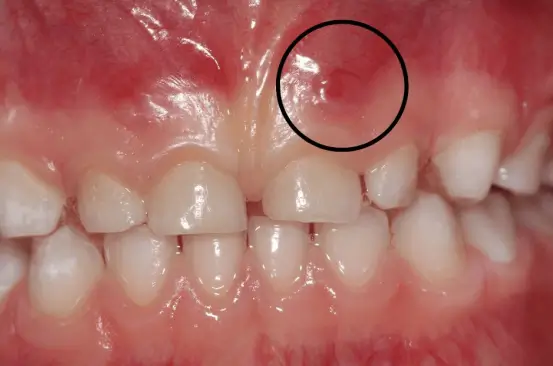What is an abscess?
● It is a sign of an infection from a buildup of pus. In children, it is usually located on the gums
above the affected tooth. It may or may not be accompanied by pain or swelling.
● Abscesses in baby teeth can affect the development of permanent teeth growing underneath the
baby tooth and lead to discoloration, weakness, or mottling of the adult tooth.
● An untreated abscess can lead to spread of infection to other parts of the body, and may even be
life-threatening.
How do abscesses occur?
● Typically, these occur as a result of previous injury to the tooth, untreated cavities, an infection, or
failing dental work. It is important to note that an abscess will not go away on its own and the
affected tooth may need to be removed.
What to look for?
● After trauma, the tooth that received the impact may change color to gray, brown, yellow, or even
pink. This alone is not a sign of infection, and the color change may actually go away after
several weeks to months..
● Always keep an eye out for a bump to appear on the gums after a dental injury and let your
dentist know as soon as possible if you see anything abnormal.
Treatment options:
● An x-ray is usually required to properly diagnose an abscess on a tooth, as it can help identify the
extent and location of the infection.
● Removal of the tooth (extraction) or nerve treatment of the affected tooth may be necessary
depending on the extent of damage to the tooth structure, nerve, and surrounding tissue and
bone.
● Either this may be done with your child’s pediatric dentist, or the dentist may refer your child to a
specialist depending on the situation.
Misconceptions:
● A common misconception is that abscesses will go away on their own since they can drain like a
pimple, but the affected tooth needs to be addressed by a dental professional as soon as
possible.
Prevention is key!
● Practicing good oral hygiene, having regular dental check-ups, and using mouthguards for sports
can prevent abscesses from forming in the first place.
Original source: American Academy of Pediatric Dentistry



